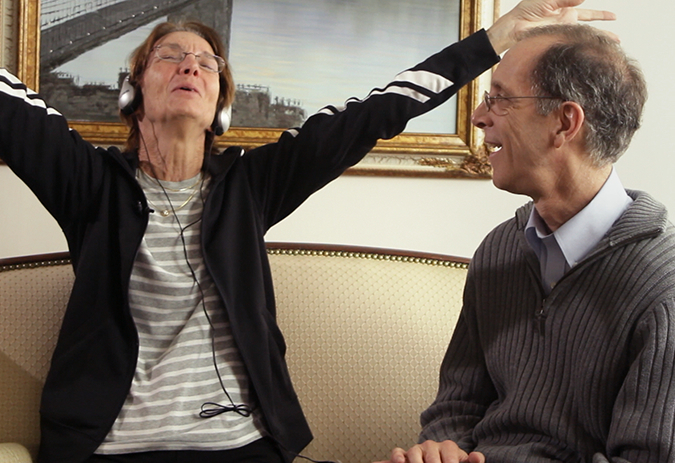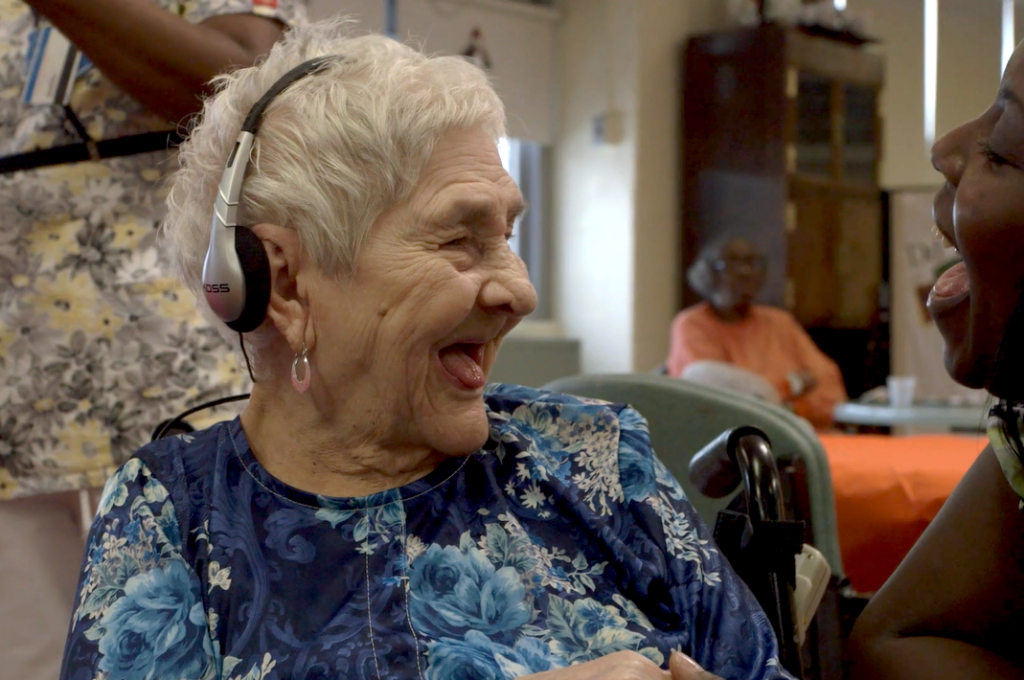The Power of Music: How Music & Memory Battles Incurable Disease
The nonprofit Music & Memory battles Alzheimer’s and dementia with astounding results.

Country fans know all about the power of music. It can amplify a Friday night, build connections between friends, act like an emotional sponge and much, much more. But did you know there’s an organization literally using the power of music like medicine – harnessing it to battle Alzheimer’s disease, dementia and more?
That organization is called Music & Memory, and for over 10 years they’ve been building consensus around a simple-but-astounding therapeutic truth – that music can cut through the static of a mind in decline. They’ve developed an effective treatment for a tragedy with no cure, and after seeing the impact themselves, superstars like Kenny Chesney, Carole King, Elvis Costello and Cyndi Lauper have all lent their support. But with COVID-19 now forcing patients to become even more isolated than ever, and long-term care priorities shifting toward basic safety, Music & Memory needs all the attention it can get.
Simply put, music has been found to revive the memories of those suffering with Alzheimer’s, dementia and more … even when nothing else can. And if organizations like Music & Memory can get the medical community on board, it could potentially change the world – one grandmother and grandfather at a time.
“Music & Memory started with the understanding that music is deeply rooted in our conscious and unconscious mind,” explains Program Director Justin Russo, speaking from his home in Upstate New York. “But as important as that idea is, it becomes even more important if the function of the brain is deteriorating. What we know is that music can awaken the brain – and with it, this really rich treasure trove of memories.”
The story starts with a former social worker named Dan Cohen. His father was in a nursing home, and Cohen figured his dad would enjoy listening to the music he loved as a younger man. Cohen loaded up a portable player with his father’s favorite tunes and dropped it off, and over time began noticing something unexpected. His dad was improving. And then he realized it must be connected to the music.
Importantly, Cohen discovered that music’s effectiveness at jumpstarting memories was tied to how personalized it was – meaning his dad saw the biggest effect when he was listening to his favorite songs, not something random. Cohen began sharing his observations with other nursing homes and gathering donated iPods, and soon, a movement was born.
As it stands now, almost six million Americans suffer from Alzheimer’s (which is defined as a type of dementia), and the disease claims more than 1,300 victims each day – making it the third-leading cause of death after heart disease and cancer. But unlike those others, it’s given almost no public attention, uniquely situated as “the only Top 10 cause of death in the United States with no known cure.”

Worse still, Alzheimer’s doesn’t just rob patients and their families of each other, it does it slowly. Over the course of many years, they’re forced to watch helplessly as their loved ones slip away … but Music & Memory has found a way to turn back the clock.
“As music fans, you and I know that music can really be the center point of our lives,” Russo says, explaining what can only be described as a remarkable phenomenon. “It’s so deeply rooted with our emotional memories that it becomes a part of us, and we take these songs along with us on our life journey. For whatever reason, when we were between the ages of 15 and 25, our brains were receiving that data and it was being stored in a number of places, and some of these places are the last to be effected by Alzheimer’s and dementia. So you can still reach someone with that song, even in the last stages of dementia. And by reach them – and I’ve seen this – I mean, they’ll come back.
“Dementia is not an identity,” he goes on. “There’s a person in there and they still continue to be that person, but music can bring them back. … So we teach long term care organizations like nursing homes how to create an organization-wide, personalized-music program … and each year we’re learning more and more about the power of personalized music. It has so many applications.”

Included among those applications are everything from relieving agitation and anxiety to helping patients sleep better, improving speech and motor function or battling depression and chronic pain. And perhaps best of all, helping participants remember their own loved ones. A regimented music program can actually help reconnect families who thought their time together was over.
“In one case there’s a daughter who regularly visited her mother in a nursing home, and over time her mother was unable to recognize her daughter,” Russo says. “But what the staff started to do was play the mother’s personalized music playlist to her 30 minutes before the daughter’s arrival, and doing so activated the cognition of the mother, so she remembered the daughter when she visited – and obviously it improved her outcomes overall. That’s a huge health boost for that situation, and that’s what happens when you can help someone make that connection between the music that is so embedded in their mind, and memory. You can actually uncover those memories, and if you watch some of the footage on our website, you see the joy return.”
That joy is easy to see in “The Henry Video” – a heartwarming viral clip that helped turn Music & Memory into worldwide movement. It features an elderly man named Henry and presents his music-driven transformation in the space of a few minutes … as well as his family’s gratitude.
The video gathered tens of million of views when it was first released, and drew the attention of a filmmaker who began documenting Cohen’s mission, which in turn became the Sundance Award-winning Alive Inside: A Story of Music and Memory in 2014. Interest in the movement soared, and since then, Music & Memory has installed personalized music programs in over 5,000 organizations in the U.S., Canada, Australia, France and Israel. “But just to put that in perspective, we’ve still only reached about 2 percent of the people living in long term care who might benefit from this approach,” Russo says.
“Advocacy is always necessary,” he continues, noting that rigorous scientific research is ongoing. Brown University undertook a multi-year study which has verified the premise that personalized music has a therapeutic effect, and now another study is breaking down exactly why. If nothing else, that work has shown that using personalized music can reduce the need for anti-psychotic drugs – potentially saving millions and eliminating side effects. But more importantly, it could also foreshadow a sea of change in healthcare generally. One where patients are treated more like individuals. And one where there’s hope.
“The real goal is culture change,” Russo says. “In a lot of the [organizations] that work with us, this culture shift emerges between the people receiving care and the people giving the care, they really transcend their positions. It becomes much more than a job, and those relationships deepen, and it has a tendency to change the way the organization thinks about care in general. It becomes much more person-centered, and that’s the goal.”


